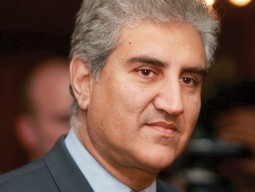
March 27, 2019 will be remembered in South Asian history for India’s claim of having acquired destabilising Anti-satellite (ASAT) capability. It is indeed a big claim made by Indian Prime Minister Modi. No doubt, Indian space capability is far better than even many European countries and it truly claims to be a ‘space faring nation’ i.e. a country with the capability of manufacturing, launching and maintaining satellites in the outer space. India has been well acknowledged for its capacity for launching other countries’ satellites through its indigenously-developed Polar Satellite Launching Vehicle (PSLV) mastery. What then pushed Indian strategic, scientific and political elite to join the club of those who have the capability of destroying space-based assets using ASAT-capable missiles. The purpose of this piece is purely to analyse the probable Indian motives and intents behind acquiring ASAT capability.
The Modi government had a post-Pulwama nightmare when it claimed to have carried out a surgical strike inside Pakistan’s sovereign territory killing around 300 terrorists and in retaliatory strike had to bear an embarrassing loss of Indian jets and the Abhinandan episode. Amid this, the Modi government needed a damage-control event. Hence it decided for space-based ‘surgical strike’ against its own ‘live satellite’. It may be recalled that previous three space weapons-capable states i.e. the US, Russia and China, all had tested their ASAT capability against their disused satellites. India would be the first ‘rich’ country which has destroyed its own live satellite to become a so-called ‘space superpower’.
Politically, the test has perhaps paid dividend in Modi’s quest for becoming Indian PM for the second tenure by making an effort of diverting attention of the Indian public from post-Pulwama embarrassment and secondly, meeting a milestone of becoming a space ‘superpower’ — a step towards Hindutva ideology. Notwithstanding, the ASAT test has posed considerable challenges to South Asian strategic stability and global arms control efforts.
The foremost impact of ASAT test would be destabilising the deterrence equation between India and Pakistan. India has claimed to use basic version of its Agni ballistic missile system that could easily reach up to low earth orbit carrying commonly purposed satellites inter alia, intelligence, communication, remote sensing, surveillance and weather-forecasting satellites. What if India employs its Agni -V version with a range up to 8,000 kilometers against strategic communication and navigation satellites — components of deterrence tools? Such capability, if acquired, could lead to preventive and pre-emptive strikes from Pakistani and Indian sides when threatened or obsessed with superiority, respectively. ASAT capability, a derivative of Indian Ballistic Missile Defence (BMD) capability, could transform into strategic miscalculations and operational anxieties, thus making escalation ladder too gradual to be easily climbed.
The ASAT test is an indicator of the Indian approach of maintaining deterrence through ‘Deterrence by Denial’ — a strategy not accepted by its traditional competitor. Moreover, the Indian pursuit of acquiring BMD and ASAT capability could also be an indicator of transforming its known nuclear doctrine i.e. from ‘No First Use’ to ‘First Use’, which has been making headlines in the recent past. Associating ASAT test with the status of ‘superpower’, albeit in space domain, also reflects upon the Indian quest for becoming a great power leading to ultimate superpower status. The test could also be with the purpose of re-establishing the US trust in its strategic capabilities for becoming ‘net-security provider’ in South Asia vis-à-vis China, which have been severely dented by Pakistan’s qualitative success in post-Pulwama happenings. Surprisingly, the Indian ASAT test was not condemned by the world, as it should have been. Only Russia and China showed their concerns. The international muted approach negatively impacted the global arms control initiatives and especially the efforts at the stalemated Conference on Disarmament (CD) to start work on ‘Prevention of Arms Race in Outer Space (PAROS)’ treaty. The meaningful silence of the world powers and especially the US indicates the discriminatory approach and the double standards towards the issue. The emerging nexus between space weaponisation and BMD also became evident. Vipin Narang, a US-based scholar of Indian origin, termed the Indian test ‘Baby BMD Test’. Lastly, it is time to view India in perspective with respect to its loyalties. India might be a monster in the making, to the US interests. It did switch from the Eastern bloc to the West, having played smart in the past by tagging itself as being non-aligned. Only time will tell how the Indian leadership would act when it gets ‘given’ status of a great power with the US assistance.
Besides much trumpeting, there are critiques also on the Indian claim of becoming a space superpower. Foremost, nothing tangible in terms of video or debris could be presented by the Indian Space Research Organisation (ISRO). It is important to mention here that despite the prevalence of latest technologies, it is still almost impossible to attribute or verify the sort of claim that India made. Secondly, the Indian claim of having tested ASAT capability is based on technology provided by the West, mainly the US and its allies. Any technological questioning or political rebuttal of the Indian ASAT test could have put their technology’s credibility to undesirable doubts leading to losing their weapons’ market besides weakening their approach of pitching India as counter-balance to a rising China.
While resisting complacency and without getting embroiled in economic drain, Pakistan may look for smart technological and political responses to the recently-acquired Indian capability, amid its space vision-2047 objectives.
Published in The Express Tribune, April 10th, 2019.
Like Opinion & Editorial on Facebook, follow @ETOpEd on Twitter to receive all updates on all our daily pieces.

































































COMMENTS
Comments are moderated and generally will be posted if they are on-topic and not abusive.
For more information, please see our Comments FAQ